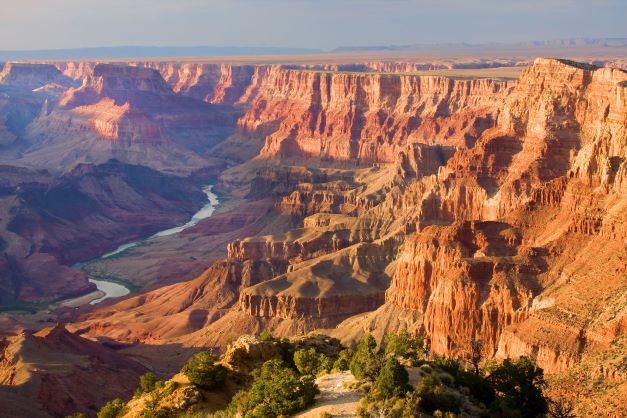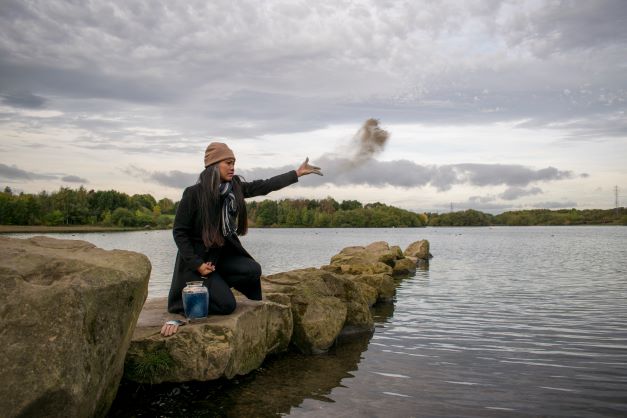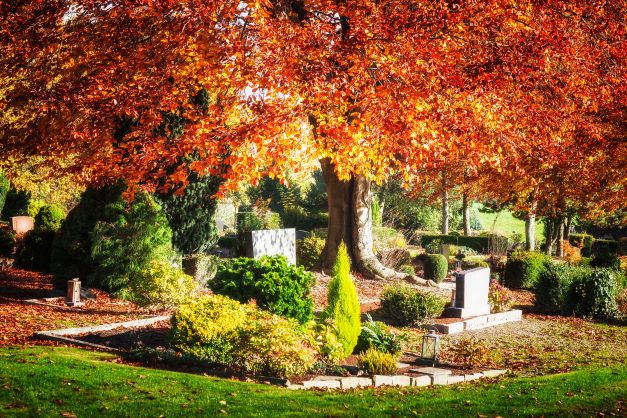All Articles & Guides / Ashes / 7 Things You Need to Know Before Scattering Ashes
7 Things You Need to Know Before Scattering Ashes
For many people, the act of scattering a loved one’s ashes brings peace and closure. It can symbolize the return of the individual to nature, or the release of their spirit to heaven. Before you head to your loved one’s favorite park to hold the ceremony, however, make sure that you understand the laws and regulations in your area. While there’s no specific national “scattering ashes law” in the United States, there are a number of rules and regulations that you may need to be aware of at the national, state, and local level.
1. Most National Parks Allow Ashes To Be Scattered
If you plan to scatter the ashes of your loved one in a national park in the United States, most parks do allow this. You cannot simply scatter ashes anywhere, however – there are specific regulations. We made a helpful list of the guidelines for each of our National Parks as of May 2023. Alternatively, you may check the National Park Service for each particular park to find the most up-to-date information on rules for scattering ashes.
- You should request permission from the chief park ranger first.
- A permit is usually required.
- Cremains should only be scattered away from trails or other developed areas.
- Environmentally or archeologically sensitive areas may be off-limits.
Realistically, as long as you stay away from sensitive or populated areas, it's unlikely that you'd be prosecuted for breaking "spreading ashes laws," even if you don't ask permission. It's still illegal, however, and you could get into trouble.

2. Ask Permission Before Scattering Ashes on Private Property
You are free to scatter ashes anywhere on your own private property, but if someone else owns the land, you need to ask permission first. Either written or verbal permission is fine, but it may be a good idea to have a record of the agreement. If the property owner says no, find another location. Don't try to secretly spread the ashes anyway. While there may be no specific cremation ashes laws that directly address this issue in your state, it's trespassing and it's illegal. You could face fines and even jail time.
3. Sports Stadiums and Amusement Parks Are Private Property
There is often a lot of confusion about the difference between public and private property. The local NFL stadium, for example, is private property, even though it may have been paid for, in part, by your tax dollars. There are many areas, including other sports stadiums, golf courses, amusement parks, and some museums, that have many visitors each year, but that does not make them public property.
This distinction is important because you need to get permission before scattering ashes on private property. And if the location is a stadium or amusement park, your request is likely to be declined. In many cases, if you're caught spreading ashes, the police will be called. Some individuals have been fined and sentenced to community service. In addition, many property owners will have the ashes removed and respectfully disposed of in another location – so while you may have spread your friend's ashes at Disney World, chances are good that they won't remain there.
4. Spreading Ashes at Sea Is Allowed
It is legal to spread ashes at sea, but anything put in the water must decompose easily. According to the EPA, burial at sea of human remains – cremated or not – is permitted, but there are several scattering ashes laws and regulations that you need to follow:
- Any type of remains, including ashes, can only be placed in the ocean 3 nautical miles from land or more.
- Ashes can be scattered from a boat or airplane.
- Only biodegradable urns may be used. Anything placed in the water must easily decompose in a marine environment.
- You can release flowers or wreaths into the water, but they must decompose easily.
- While a permit is not required, you must report the burial to the EPA within 30 days.
- Pet cremains may not be spread at sea without a special permit.
It's important to note that most rivers, ponds, and lakes are not subject to federal regulation, and therefore these scattering ashes laws do not apply. You need to contact the mortuary board, environmental agency, or health agency in the state where you want to spread the ashes to learn more about the relevant laws. Scattering ashes in inland waters is illegal in some states.
Many states also have laws related to spreading ashes that prohibit cremains from being scattered on beaches or shorelines. Some states, such as California, do permit it as long as you’re 500 yards from shore. Read through some of the best tips for scattering ashes at sea to help guide this type of farewell.

5. You May Be Allowed to Scatter Ashes on Uninhabited Public Land
This is another one of those spreading ashes laws that depend on the state you live in, so always check with the appropriate authorities first. Forests and other wilderness areas can be lovely places to scatter ashes but do so away from commonly used trails or other locations where you know people frequently visit or travel.
6. It May Be OK to Scatter Ashes in a Graveyard – But Maybe Not
First, you need to know if the graveyard is public or private property. If the cemetery is on private property, you need to ask permission. For public graveyards, ask the city or town that manages the property if there are any scattering ashes laws or regulations that forbid spreading ashes; some towns have banned the practice. An increasing number of private cemeteries actually offer "scattering gardens," and may only allow ashes to be scattered there and only for a fee.
If you're planning to spread the ashes on a grave or in a crypt, make sure that you speak to the individual's immediate family (if possible) before doing so.

7. Be Considerate of Others
This is perhaps the most important thing to keep in mind when scattering ashes: Think about other people. You'll notice that many of the scattering ashes laws above specifically mention staying away from trails and other publically used areas. Unless they are very finely pulverized, cremains can be distinctive. No one wants to find a pile of cremains when they're hiking with their kids or playing at the beach.
Tips for Scattering Ashes
Depending on how you plan on scattering your loved ones ashes, it may be beneficial to follow a checklist for a scattering ashes ceremony to make sure everything is planned accordingly and that the event isn’t compromised by lack of preparation.
- Weather - Consider the weather and season when deciding when and where you are going to be scattering ashes. If you’re planning on hiking in a national park, it’ll probably be best to avoid harsh winters or rainy seasons. Wind can also be a challenge when spreading ashes. A gust in the wrong direction could blow the cremains onto people or into places that you don’t want them to go. Try to pick a time when there is just a light breeze, and release the ashes downwind, so that they blow away from you.
- Transportation - When traveling to the location where you plan to scatter the ashes, you’ll need a container to transport the cremains. Many people find that the box from the crematorium or funeral home is too plain and want a more decorative urn. You may want to consider a scattering urn made specifically for spreading ashes. These containers are in the shape of a long and narrow tube. The urn seals tightly so that ashes aren’t spilled but can be opened easily when it’s time to release the cremains. If you’re planning on flying with the urn, you’ll need to make sure that it can be safely transported through the airport and on the plane. Read our tips on flying with ashes to make sure your travel plans o smoothly.
- Plan a Ceremony – If you’re involving family and friends in your ceremony, plan your order of events and coordinate with your guests on speeches and readings. Also ensure everyone understands the travel expectations so they can prepare accordingly if you’re hiking to a destination.
- Choose Your Urn - There is a misconception that a special urn must be used to scatter the remains of your loved one. This is simply not true. Any urn that can be re-opened can be used for the scattering ceremony in the location you may choose. Often, after a formal memorial service is completed, a family will arrange a more private scattering with close family and friends. To save money and for convenience, a family may reuse the same urn and even choose to keep some of the ashes and only partially scatter others.
Saying goodbye to a loved one is never easy, but by planning a scattering ashes ceremony, their memory can live on and be celebrated by family and friends. If traveling is out of the question, consider having a private ceremony in a backyard or at a local park if it abides by their rules. Creating a memorial garden or even having a piece of cremation jewelry to hold a pinch of cremains is a thoughtful way to honor a loved one and provide closure.





